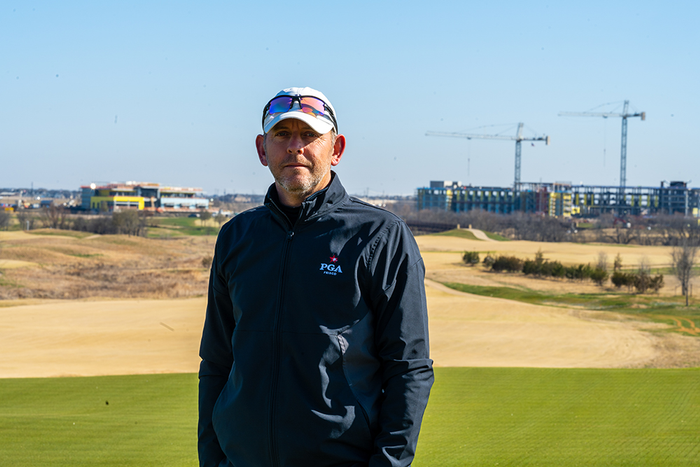It will be about a year before PGA Frisco’s pair of 18-hole championship golf courses, 10-hole short course and 75,000 square-foot putting green see any official play. However, that doesn’t mean the lush spaces are currently void of activity.</p
p>It’s quite the opposite, in fact, as a highly skilled team of specialists and others works most days to maintain the fairways, greens and surrounding landscape at the 665-acre site.</p
p>The PGA Frisco agronomy team is comprised of more than three dozen staffers in various roles including superintendents, equipment managers, application foremen, irrigation techs and groundskeepers. The team, which is expected to double in size as the facility nears its opening date, is led by Roger Meier, senior director of golf course maintenance operations.</p
div class="image-main image-align-center">
A PGA employee for more than a decade, he previously served as superintendent at the Jack Nicklaus-designed Valhalla Golf Club in Louisville, Kentucky, before joining the PGA of America headquarters team here in November 2019.</p
p>Meier earned a bachelor’s degree in turf grass science management from State University of New York (SUNY) College of Agriculture and Technology at Cobleskill and has spent his career working in the golf industry. While at Valhalla, he oversaw the redesign and renovation of its course, which hosted a trio of championships in 2011, 2014 and 2018.</p
p>He calls PGA Frisco “really an incredible project. We talk a lot about (how) we really feel like this is the new home for golf in America.”</p
p>The “West Course,” designed by architect Beau Welling of South Carolina-based Beau Welling Design, is “a little bit more player-friendly,” Meier says, than the “East Course,” which was designed by architect Gil Hanse of Pennsylvania-based Hanse Golf Course Design. The latter will be where the 26 championships that are scheduled during PGA Frisco’s first dozen years of operation will be played.</p
p>Construction on the golf courses was completed late last summer and now “we are fully grassed out,” Meier says. He and others on the agronomy team currently are tending to about 450 acres of the entire facility, including the surrounding landscape that is abundant with native grasses and wetlands.</p
p>Rest assured, there’s much more to the agronomy team’s work than merely watching the grass grow.</p
p>“Even though it’s 46 holes of golf, our acreage is big enough to where it really encompasses about four golf courses,” Meier explains. “We are maintaining the golf course today like any other golf course. We’re not as intense as if it (were) an open facility, but we are maintaining things to a pretty high level” as well as collecting data about how the grasses perform at various times during the year.</p
p>Getting established</p
p>Ground was broken in June 2019 and PGA Frisco’s courses began taking shape in January 2020. The construction process “was pretty challenging,” Meier says, due to the the native Blackland Prairie soil at the former pasture site. “It’s a really interesting soil. When it gets wet, it swells and it gets really sticky and when it dries out it turns, in essence, into concrete.</p
p>“One thing we wanted to ensure here … was that the facilities perform well, and the biggest concern for us was really drainage,” he says, especially given that future championship games will primarily be hosted during the spring, historically the wettest time of the year in North Texas. Upward of 450,000 linear feet of total drainage (the equivalent of about 85 miles) has been installed at the site.</p
p>Meanwhile, both the East and West courses were capped with about five inches of sand over the native soil to improve drainage as well as provide a growing medium for the grasses. Bunkers and other sloped areas saw sod installed while all other areas underwent a process called sprigging, which involves harvesting grass stolons (above-the-ground stems) that are planted and eventually grow to fill in an area.</p
p>Several varieties of Bermuda grasses were installed at PGA Frisco, including one called NorthBridge, which was bred at Oklahoma State University. It is known to tolerate the cold temperatures that North Texas can experience during the wintertime.</p
p>Meanwhile, TifeEagle Ultradwarf, another Bermuda grass variety, was selected to cover the putting surfaces and Lazer Zoysia, a variety developed at Texas A&M University, was chosen for the putting green.</p
div class="image-medium image-align-left">






